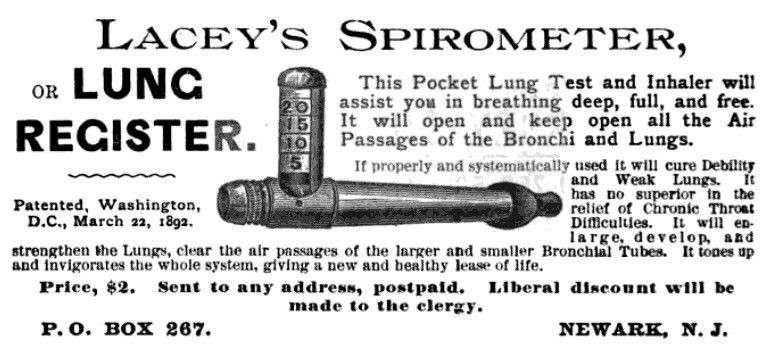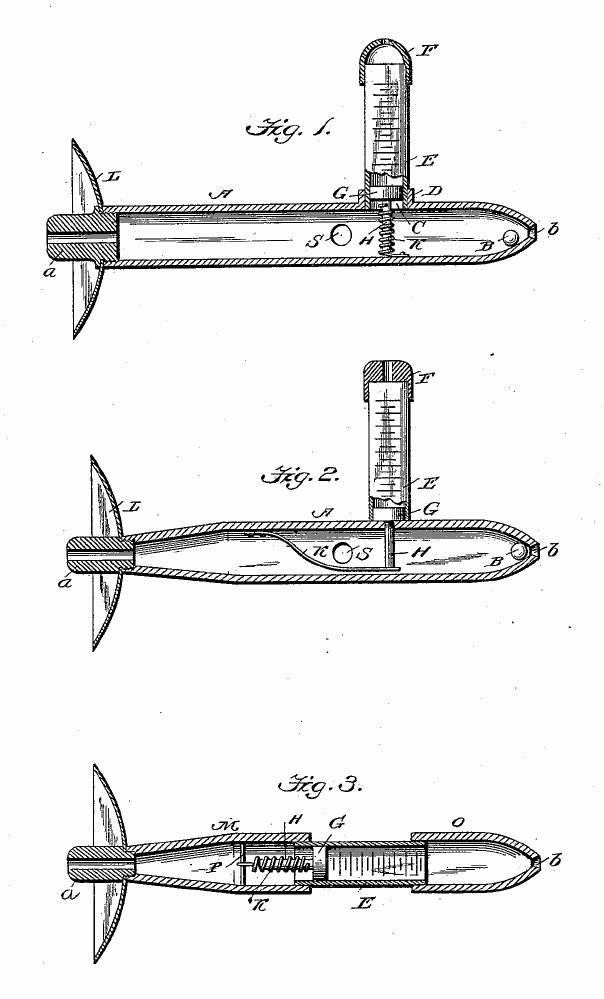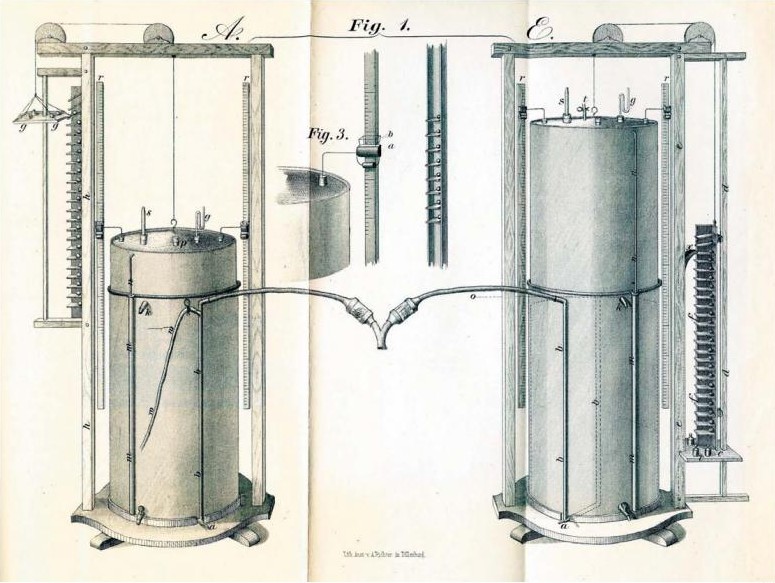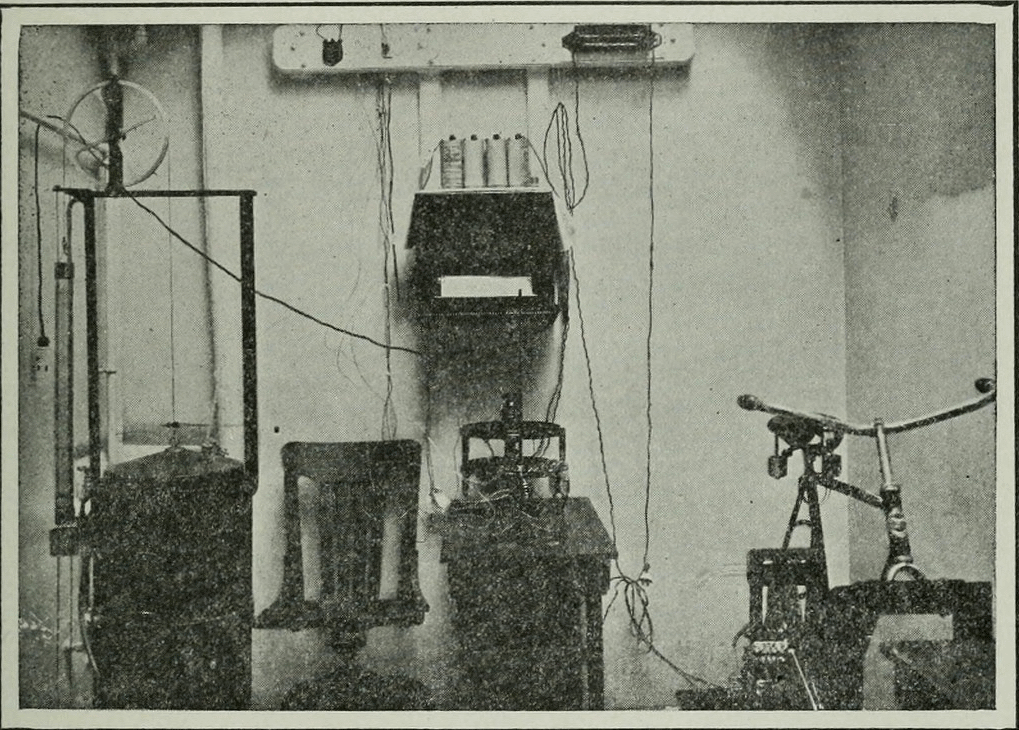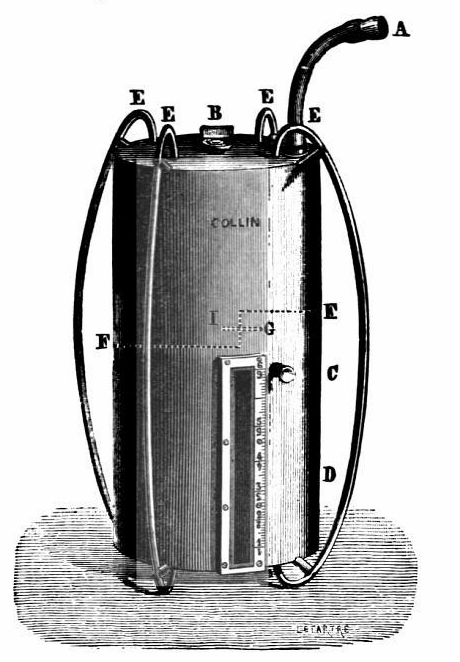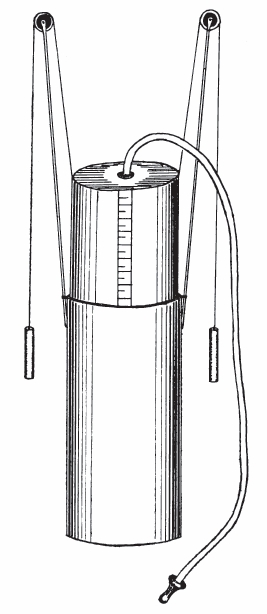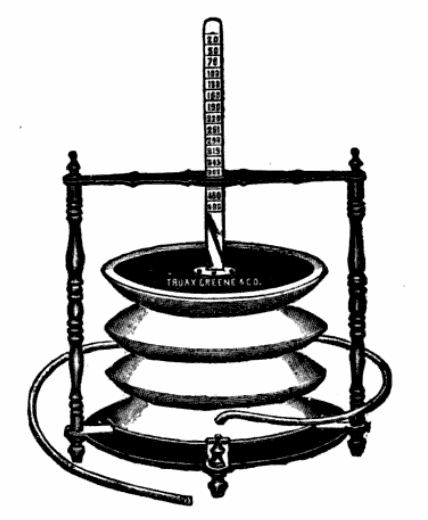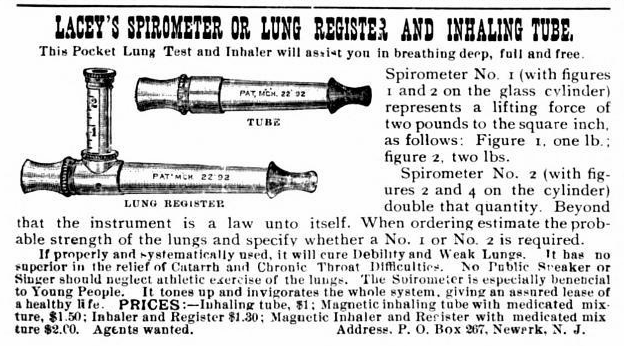From The Minutes of the 1897 Session of the Newark Conference of the Methodist Church, Page 150.
Category Archives: 1890s
Spirometer, Lacey’s, 1892
From Patent application number 471,289 dated March 22, 1892.
“The operation of my invention is as follows: The mouth-piece a is placed in the mouth and air slowly inhaled until the lungs are completely filled. The opening S in the side of the main tube is closed by a finger of the person using the instrument and the air which has been taken into the lungs is forced out. This outward passage of air operates the valve B to close the outlet b, and the column of air, acting on the piston or plunger G, causes the same to move longitudinally in the tube E. A person can thus by repeated tests inform himself as to the increase in the capacity of the lungs by the distance the plunger is moved at each exhalation. When the instrument is removed from the mouth, the air withing the tube is forced out through the mouth-piece and the opening S by reason of the spring K drawing the plunger or piston back to its normal position.”
Spirometer, Speck, 1892
Designed to measure ventilation during exercise. Subject inhaled from the spirometer on the left and exhaled into the spirometer on the right. Counterweights were added as the left spirometer bell rose above the water level and removed as the right spirometer bell fell. Originally from: Carl Speck, Physiologies des Menschlichen. Atmens nach eigenen Untersuchungen, 1892.
Exercise Testing with spirometer, 1895
Found on Flickr. Image from page 180 of “Transactions – American Society of Heating, Refrigerating and Air-Conditioning Engineers” (1895)
“Fig. 18 View in Observation Room looking toward south wall. In the upper center ofthe picture is the Body Temperature Recorder. In the lower right corner Is the Bicycle Ergometer, the controlling rheostat being located on the table. At the left is seen a spirometer used to collect and measure exhaled air.”
Spirometer, Joal’s, 1895
From “On respiration in singing” by Joseph Joal, Published by F.J. Rebman, 1895, page 84.
“…this instrument has a double Mariotte’s vase, composed of two chambers, placed over one another and separated by two semi-circular diaphragms, F H, which are joined by a vertical septum. The two chambers are put into communication by tube I. The apparatus being half full of water, and the liquid filling the upper reservoir, if we breathe by the mouthpiece A, a quantity of water is displaced, and flows out of the upper reservoir, into the lower one; the graduated glass permitting us to determine the level of the liquid.
“When the upper chamber is empty it suffices to turn the instrument upside down, corking the tube E, and placing the mouthpiece on the chamber D, at the same time that we raise the screw C, and close the opening C.”
Recording U-Tube Mercury Manometer
A recording mercury U-tube manometer. The float in the left side of the U-tube moves up and down in response to respiratory pressures. The thin metal rod attached to the float had a recording pen at its tip.
From Das Stottern. Eine Monographie für Aerzte, Pädagogen und Behörden by Hermann Gutzmann, published by Rosenheim, 1898. page 149.
Spirometer, Modified Hutchinson, 1898
Purported to be a Hutchinson spirometer in the text of the article, this looks a lot more like a conglomeration of several different designs instead. The manufacturer was not named but was likely German.
From Das Stottern. Eine Monographie für Aerzte, Pädagogen und Behörden by Hermann Gutzmann, published by Rosenheim, 1898. page 148.
